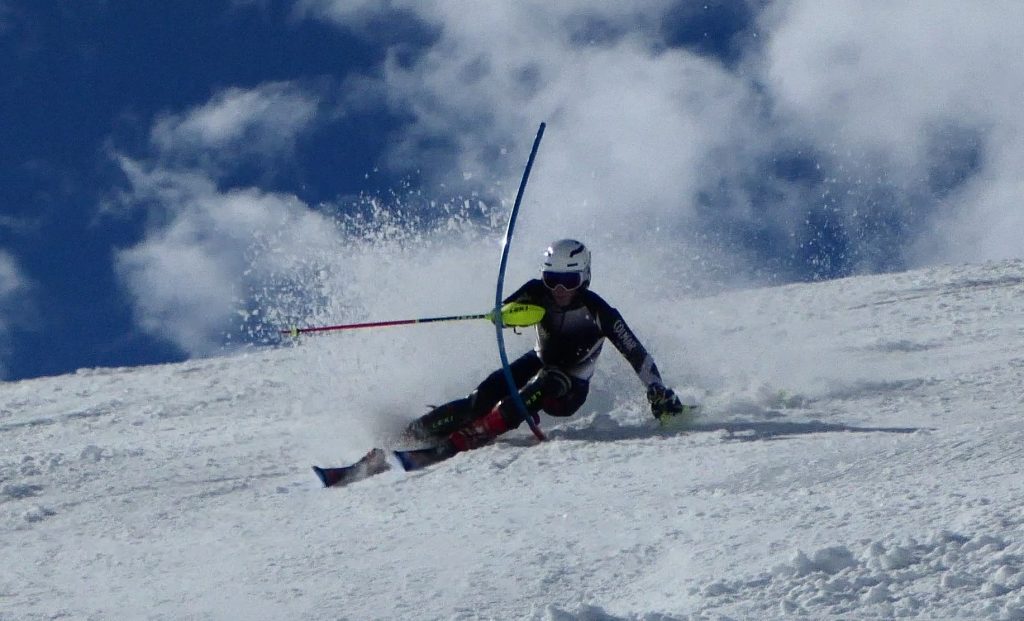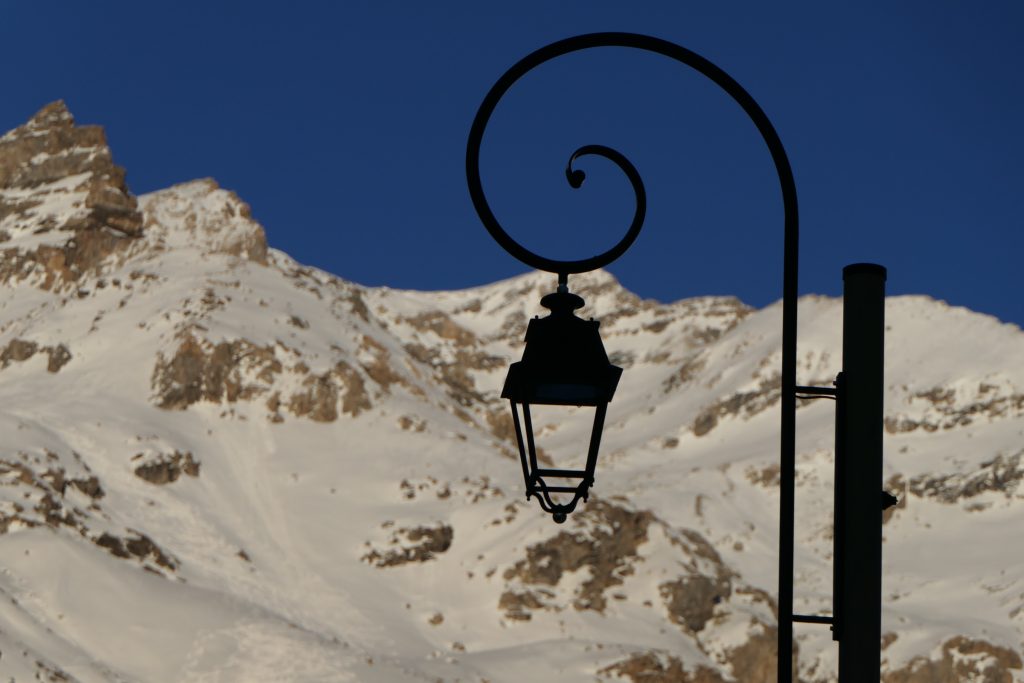Reconstructing Nil’s Skiing – for Building Confidence and Protecting the Knees
First of all Nil skied a gentle slope so I could watch. Despite having been taught dynamics when she was age 10 there was no sign of any – she was moving her body to the outside of the turns and looked very precarious and uncomfortable. Later on I found out she had been told to do this by a French instructor a few days earlier! Nil also admitted to trying to turn the skis with her feet – another thing to be avoided at all costs. Straight away we went indoors to remove the ski boots and look at the feet…
Feet/Skating/Dynamics
Feet
The feet support the active movement of the body above them so they have to be used correctly.
The foot rocks over onto its inside edge from beneath the ankle joint. This helps tighten the adductor muscles (inside of upper leg) and helps to stabilise the knee. Both feet should be held in this position most of the time.
Skating
Skiing is really just a form of skating. Skis diverging, feet rocked onto inside edges and then falling toward the tip of one ski – then the other – and we are skating. The important thing is the supporting ski gripping with its edge. Nil had no problems with any of this. The object of this exercise is simply to actively move the body (Centre of Mass) and to begin to have awareness of its dominant role in skiing.
We progressively built up to complete linked turns by skating inward in incremental steps.
The goal here was to get Nil extending her outside leg and using it to accelerate the Centre of Mass inward – eventually the “incremental” steps would be replaced by one initial push at the start of the turn and the ski design itself would take over the job of turning. With the leg being extended and the bones of the upper and lower leg stacked on top of each other the muscles and tendons around the knee can relax.
Dynamics
Dynamics are what make a forward running ski work – that is “The skier has one job – to fall over. The ski has one job – to lift the skier back up”. The skating is to encourage dynamics – disequilibrium – because the ski only responds to the accelerations of the Centre of Mass.
Here’s Alex – my race trainee showing dynamics at an accomplished level… notice the fully extended outside leg – all the bending is at the hip joint.

Pivoting
Prior to pivoting we worked on side slipping using a “joystick ” control with the Centre of Mass – making direct, forward diagonal and backward diagonal side slips with only subtle movements of the Centre of Mass
The skis have two ways of working – either running forward (Dynamics) or sideways (Pivoting).
Part of Nil’s fear – and knee pain – is induced by feeling she has to rush the start of her turns on steeper terrain. What she really needs is to understand and exploit the advantages of pivoting. Pivoting is a braking form of skiing and although I teach it as a specialised exercise it can be blended with dynamics too. Detailed explanations are found here: http://madeinmountains.com/pivo/
Our goal was just to use the uphill ski on its uphill edge (when running forward/dynamics) for the start of the push of the Centre of Mass into the turn. Moving a little bit forward onto the front of the uphill ski when doing this causes it to pivot (swing) tightly and effortlessly into the turn – is a mechanically efficient and secure manner – along with good dynamics – everything pulling in toward the turn centre and providing tight and safe turns particularly on the steep terrain- but also imparting confidence – because it feels solid and right to all the senses of the body.
Here’s how a company assesses the swing weight performance of a ski…
Today’s views…



